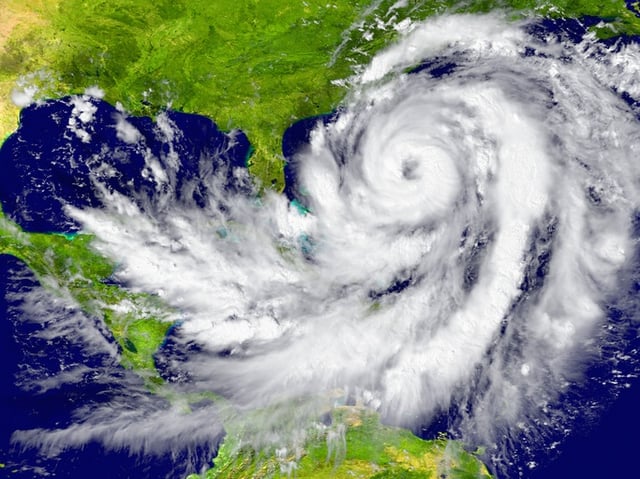Mock Disaster: Is Your Emergency Team Prepared for a Hurricane?
 A hurricane can be an incredibly damaging and deadly event, with some of the strongest storms causing millions or even billions of dollars’ worth of property damage. Hurricane Katrina, the costliest storm on record, was also one of the deadliest, taking the lives of around 1,200 people.
A hurricane can be an incredibly damaging and deadly event, with some of the strongest storms causing millions or even billions of dollars’ worth of property damage. Hurricane Katrina, the costliest storm on record, was also one of the deadliest, taking the lives of around 1,200 people.
However, in the face of these threats, many organizations located in coastal areas are not fully prepared for a hurricane. Considering the fact that the 2017 hurricane season is expected to be among the strongest in more than 10 years, now is an ideal time to consider whether your emergency team is prepared for a hurricane.
A Very Real Threat
As Hurricane Katrina demonstrated, the path and impact of a hurricane can be unpredictable, making the threat to your employees and business ever more real. That’s why it is vital for organizations located in coastal areas to be fully prepared for the possibility of a hurricane.
In the event of a hurricane, officials in coastal communities ask citizens and business owners to pay close attention to weather reports and evacuate as soon as possible after the order is given. It’s important to take evacuation orders seriously, and to be ready to leave immediately. And don’t expect evacuation to be a quick process; in one South Carolina town, officials say, evacuation for people living or working nearest the ocean could take up to 15 hours.
The chaos and confusion of an emergency situation demands thorough preparedness. This is especially true at businesses where emergency teams may be responsible for hundreds of people—or more. If your business is located near the coast, you should have a full-fledged emergency plan in place. And your emergency team should be well-prepared for a hurricane, specifically.
Stage a Mock Disaster
Mock disaster scenarios are extremely helpful in assessing your preparation for a hurricane, identifying gaps in your plan and making the necessary adjustments.
Assess your team’s preparedness for a hurricane by staging a mock disaster. Here are a few steps to help guide your drill:
1. Gather your team.
Be sure that all relevant stakeholders are fully available to participate in the mock disaster. Depending on the size of your organization, you might need a full day to complete the entire exercise.
2. Prepare for the worst.
For mock disaster scenarios, many organizations assume the worst—in this case, a Category 5 hurricane with severe wind and rain, and coastal and inland flooding. By preparing for the worst, you’ll ensure all your bases are covered.
3. Assess hazards and response.
Make sure you have a full list of the potential hazards associated with a severe hurricane. Walk your emergency team through each step of the response—especially those that may be difficult to actually conduct during the mock scenario, such as fully evacuating the building or collaborating with local authorities. At this point, you should also confirm evacuation routes and check to make sure all supplies, including first-aid kits, are ready.
4. Monitor storm path.
The next step would be for the emergency team to monitor the storm’s path and listen in on local radio or TV news. Social media is also a good source for up-the-second information.
5. Notify stakeholders.
Of course, you’ll need to practice notifying employees and other stakeholders of the impending hurricane. This includes individuals in your facility, as well as business partners, customers, social media followers and others.You might communicate through a manual call tree, using intranet announcements or with a mobile crisis management app, which allows for real-time communication and alerts. During your mock scenario, make sure that your communication method works as expected.
6. Activate emergency team.
This is one of the most important steps. Here, your emergency team will mobilize and position all emergency equipment, provide water, medical care and other needs to stakeholders; and complete other tasks to help ensure business continuity.
7. Coordinate with local authorities.
In a real hurricane, you may need to coordinate with local police or fire and rescue in order to streamline your response. If your emergency team is responsible for a large number of people, be sure to have a plan in place for reaching the appropriate authorities.
8. Evacuate or shelter in place.
Depending on the official directive, you will likely evacuate or shelter in place during a hurricane. It’s important to practice this part of the scenario, since individual employees need to know exactly what to do during an emergency. Ideally, they will be able to think back to their training and mock drills and act quickly and decisively to protect themselves and others.
Although there are many steps involved, staging mock disaster scenarios can be a simple process. To streamline your scenario, refer to FEMA’s Emergency Planning Exercise for hurricanes, which is designed to help private-sector organizations assess their emergency preparedness.
By taking your emergency team through these key steps, you will be able to assess the effectiveness of your hurricane crisis plan. If you discover any vulnerabilities or “not workings,” now is the time to rectify them. By making the necessary adjustments today, you will be better prepared to for the 2017 hurricane season and ensure your organization and its employees are well protected if the big one hits.









